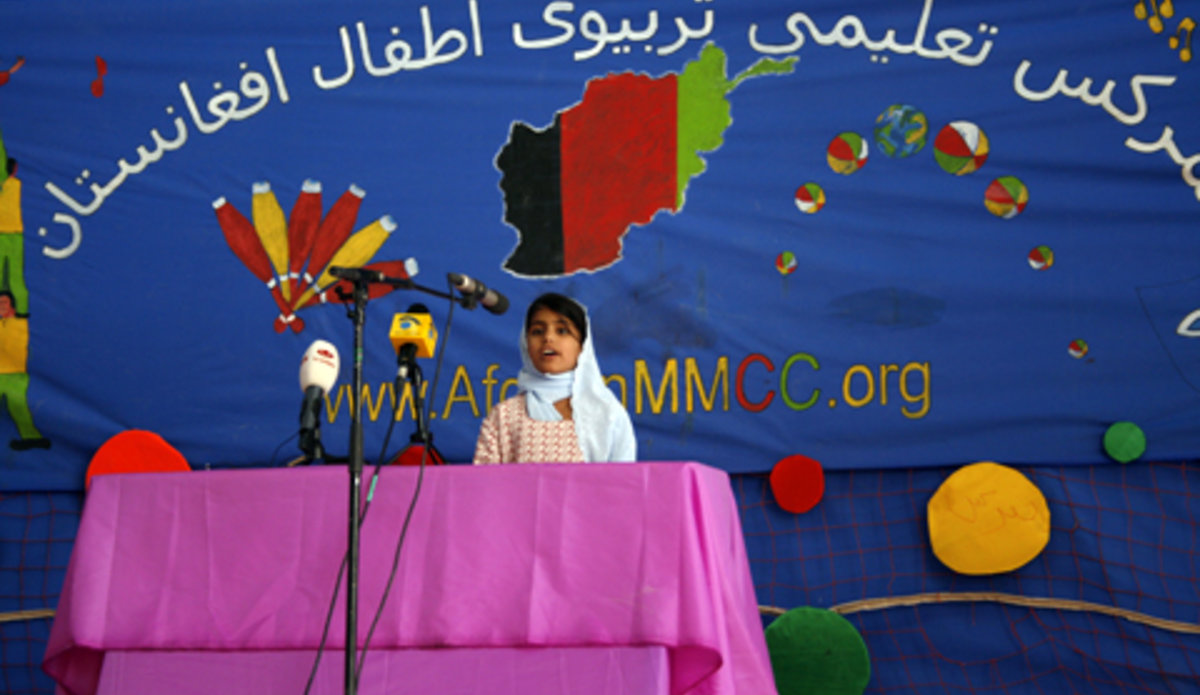UNICEF action in Afghanistan 2009
KABUL - In 2009, 6.8 million children were enrolled in schools of grade 1 to 12, among them, 2.5 million girls. Download the UNICEF Factsheet
For UNICEF 2009 was an extension of its preceding Country Programme 2006-2008. In line with national priorities outlined in the Afghanistan National Development Strategy (ANDS) 2008-2013, related MDGs (Millennium Development Goals) and the UNDAF (United Nations Development Assistance Framework) 2010-2013, UNICEF has designed the new Country Programme of Cooperation with the Islamic Republic of Afghanistan which will start in January 2010, covering a four year period.
Education
UNICEF continued its support to increase enrolment and retention of girls in schools. In 2009, 6.8 million children were enrolled in schools of grade 1 to 12, among them, 2.5 million girls. For 303, 608 girls this was the first time ever. 2.6 million pupils have been provided with learning material.
Water, Sanitation and Hygiene (WASH)
UNICEF advocated and supported the development of a national rural WASH policy for 2010-2020 targeting ANDS and MDG goals. 393,000 students and 3,235 teachers from 542 schools have been provided with access to WASH facilities. Another 523,000 people were provided with safe water (2348 bore well with hand pumps, 53 pipe water systems and 20 strategic water points constructed in 2009) implemented through Community Development Councils and 300,000 vulnerable people obtained access to safe drinking water and hygiene education. 35 clean village projects have been implemented, ensuring hygiene and sanitation for 10.000 families.
Child Protection
Thanks to UNICEF advocacy and technical support, the Government of Afghanistan submitted its first State Report on the Convention on the Rights of the Child in August 2009. Afghanistan had ratified the Convention in 1994. Child Protection Action Networks (CPAN) are now functional in 28 provinces, assisting 1,598 child protection cases over the past 12 months. Capacity for responding to grave child rights violations in the context of armed conflict has been increased through the establishment of four Regional Task Forces (Monitoring Reporting Mechanism) facilitating data collection, advocacy and response.
Health and Nutrition
Immunization coverage has increased to 84 per cent for diphtheria, tetanus, pertussis, hepatitis B and Hib 3 (Heamophilus influenza) and 75 % per cent for measles. By using locally recruited staff and relying on community health workers wherever possible, the Ministry of Public Health (MoPH) with support of UNICEF and WHO, has reached 7.5 million children with nine rounds of national polio immunization in 2009. In parallel to polio immunization, 3.03 million children aged 9-59 months have been supplemented with Vitamin A. UNICEF and WHO supported Afghanistan in becoming the first country in the world to use bivalent oral polio vaccine in December. A National Code for Marketing of Breast Milk Substitutes was adopted in April. 38 sites for integrated maternal and child health and nutrition have been set-up in the provinces of Nooristan and Badghis.Two Maternity Waiting Homes are operational in Kandahar and Badakhshan provinces. From June to November 2009, these two MWHs treated 123 women with high-risk pregnancies.
Communication and Advocacy
Celebration of the 20th anniversary of the CRC resulted in high level advocacy on child rights which included a joint declaration UNICEF/European Union/European Commission reaffirming the necessity to respect the rights of the Child. In partnership with BBC/AEP, the Killid Group and Tolo TV messages as well as interactive radio programs related to positive behaviors in immunization, hygiene, prevention of violence and literacy have been disseminated throughout the country. 1.000 schools and ten Youth Information and Contact Centers (YICC) were provided with awareness raising material.
Emergency response
Through out the year UNICEF maintained an emergency preparedness stock to cover the needs of 40,000 families; in line with it’s commitments as leader of the Nutrition and WASH clusters and co-leader of the education cluster. Assistance was provided to families affected by floods, earthquake, severe winter, seasonal influenza, H1N1, drought and high food prices.
 UN
UN






